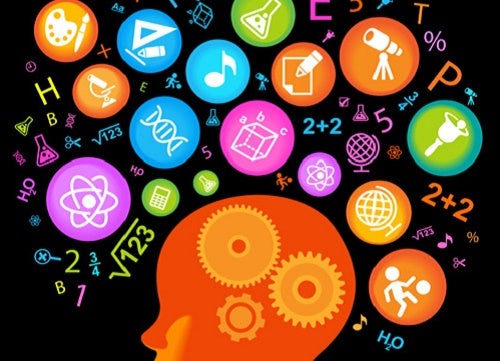Have you ever had a hard time coming up with new ideas? We all go through moments in which inspiration insists on turning its back on us. When this happens, and work or life circumstances require us to innovate, a tense and restless kind of creativity appears.
Unsurprisingly, the pressure to come up with new ideas that are groundbreaking and innovative, as well as beneficial and profitable, can be a potential source of discomfort. A new investigation attempted to shed some light on this matter.
Innovation
To innovate is to progress. Without innovation, we’d lack the medical or technological advances that we enjoy. For this reason, innovation has been studied in great depth from different branches of knowledge. These range from engineering, through anthropology, to psychology.
The definition given by organizational psychology of this term is that of “promoting, proposing and putting into practice new and better forms of a product or the process that results in a product”.
On the other hand, while creativity consists of thinking differently and getting new ideas, innovation occurs when we put them into practice. Thus, innovation and creativity are far from pointing only to the generation of new ideas. In fact, they also refer to how they can be implemented and whether they’re useful or useless.
“Learn the rules like a pro, so you can break them like an artist.”
-Pablo Picasso-
The paradox of creativity and innovation
It’s always been thought that creativity and innovation are two virtuous characteristics. However, the research carried out from the psychology of organizations suggests that both creativity and innovation work as a paradox. Therefore, both can produce optimal results, but also undesirable ones. The reason why can be found in the emotional regulation processes of creative individuals.
The creative jolt
Creating something new is like a path. In fact, there are as many paths as there are creative people. To be creative, two ingredients are necessary: cognitive flexibility and perseverance. When they’re found together, creativity can skyrocket.
However, jobs related to creativity are often poorly defined at work. This means that the ingredient known as cognitive flexibility is needed throughout all the stages of generation, evaluation, implementation, implementation, and the results. Consequently, this can cause great mental exhaustion.
Tense creativity emerges in the initial stages. When workers search for a new idea, they can experience what Kristina Potocnik calls a creative jolt. This shake implies a decrease in positive affect at the same time as aversive emotions are experienced, such as fear or frustration.
On the other hand, it’s been found that people are more creative when their emotional state changes. For instance, when they move from a negative valence to a positive valence emotion. With this affective change, creative ideas are born. However, the cost of these emotional changes can be high if they occur too frequently. This is something that occurs on a daily basis in professions where being creative is part of the job.
“The existential crisis pushes people to engage in further difficult exploration that ultimately helps create an idea that is better.”
-Kristina Potocnik-

Emotional regulation and creativity
Workers have to identify which of their characteristics may conflict with those of their colleagues. During the process of generating new ideas, tensions and disagreements can arise that muddy and hinder creativity.
To deal with this, they must be able to regulate their own emotions and even those of others, such as those in supervisory positions. Regulating emotions implies being able to detect, evaluate and change them. The aim is to reach the creative goal.
In jobs that require creativity, before coming up with a new idea, individuals might go through a whole roller coaster of emotions. The frustration of facing a problem for which there seems to be no solution can come to rule their moods. Tense creativity is the process in which new ideas emerge. Moreover, the regulation of emotions plays a fundamental role in reaching successful conclusions.
“Managing one’s own emotions is crucial to persisting in both stages of creativity and innovation.”
-Kristina Potocnick-
The post Tense Creativity appeared first on Exploring your mind.



















Comments